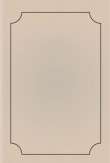قراءة كتاب Encyclopaedia Britannica, 11th Edition, "Matter" to "Mecklenburg" Volume 17, Slice 8
تنويه: تعرض هنا نبذة من اول ١٠ صفحات فقط من الكتاب الالكتروني، لقراءة الكتاب كاملا اضغط على الزر “اشتر الآن"

Encyclopaedia Britannica, 11th Edition, "Matter" to "Mecklenburg" Volume 17, Slice 8
href="@public@vhost@g@gutenberg@html@files@42473@[email protected]#ar62" class="pginternal" tag="{http://www.w3.org/1999/xhtml}a">MAXIMILIAN I. (elector of Bavaria)

MATTER. Our conceptions of the nature and structure of matter have been profoundly influenced in recent years by investigations on the Conduction of Electricity through Gases (see Conduction, Electric) and on Radio-activity (q.v.). These researches and the ideas which they have suggested have already thrown much light on some of the most fundamental questions connected with matter; they have, too, furnished us with far more powerful methods for investigating many problems connected with the structure of matter than those hitherto available. There is thus every reason to believe that our knowledge of the structure of matter will soon become far more precise and complete than it is at present, for now we have the means of settling by testing directly many points which are still doubtful, but which formerly seemed far beyond the reach of experiment.
The Molecular Theory of Matter—the only theory ever seriously advocated—supposes that all visible forms of matter are collocations of simpler and smaller portions. There has been a continuous tendency as science has advanced to reduce further and further the number of the different kinds of things of which all matter is supposed to be built up. First came the molecular theory teaching us to regard matter as made up of an enormous number of small particles, each kind of matter having its characteristic particle, thus the particles of water were supposed to be different from those of air and indeed from those of any other substance. Then came Dalton’s Atomic Theory which taught that these molecules, in spite of their almost infinite variety, were all built up of still smaller bodies, the atoms of the chemical elements, and that the number of different types of these smaller bodies was limited to the sixty or seventy types which represent the atoms of the substance regarded by chemists as elements.
In 1815 Prout suggested that the atoms of the heavier chemical elements were themselves composite and that they were all built up of atoms of the lightest element, hydrogen, so that all the different forms of matter are edifices built of the same material—the atom of hydrogen. If the atoms of hydrogen do not alter in weight when they combine to form atoms of other elements the atomic weights of all elements would be multiples of that of hydrogen; though the number of elements whose atomic weights are multiples or very nearly so of hydrogen is very striking, there are several which are universally admitted to have atomic weights differing largely from whole numbers. We do not know enough about gravity to say whether this is due to the change of weight of the hydrogen atoms when they combine to form other atoms, or whether the primordial form from which all matter is built up is something other than the hydrogen atom. Whatever may be the nature of this primordial form, the tendency of all recent discoveries has been to emphasize the truth of the conception of a


